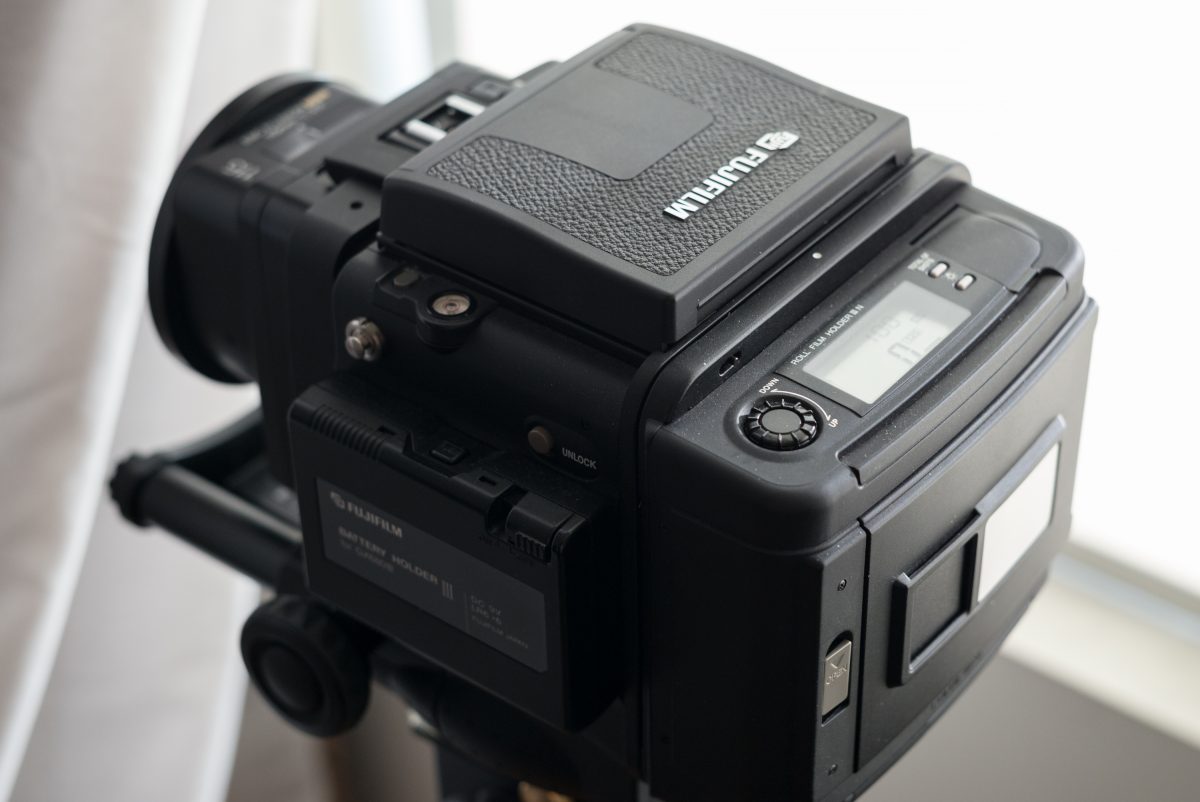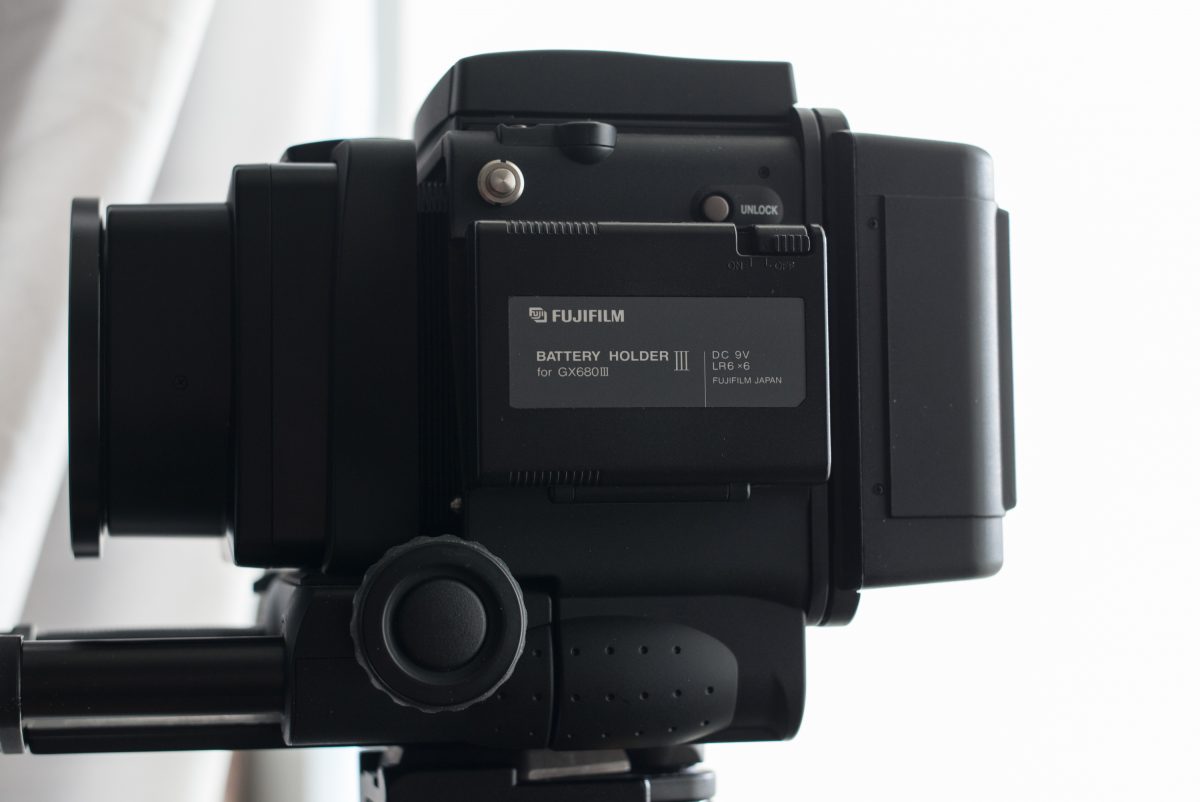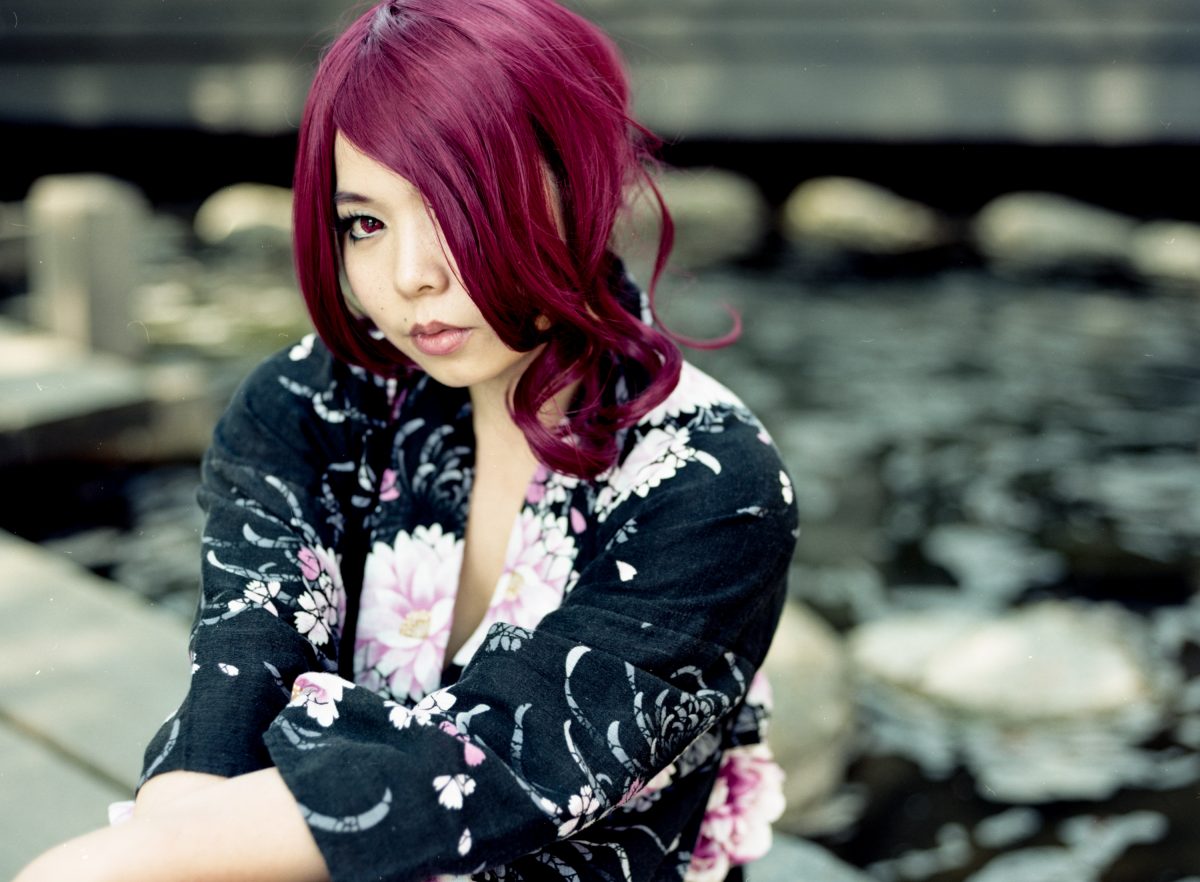Having shot with the Fuji GX680 III S medium format film camera for a few months, I wanted to give my impressions about the camera so far.
I came across this camera while doing research to replace my Mamiya RZ67 camera. The RZ67 had a broken bottom plate and I didn't feel comfortable using it in the field. Rather than attempting to find someone to fix the bottom plate (or even fix it myself) I just opted to look for alternative.
What drew me to the GX680 III S was the larger 6x8 size and the rail mounted lenses. Nothing really special in my decision other than I thought it'd be fun to try out! Plus a complete kit was much cheaper than a Hasselblad or even a Rolleiflex system.
My first impression of the camera was that it was pretty big and heavy! Definitely very hard to hand hold shoot with, but not impossible. I mounted it to my Manfrotto 028B tripod with 229 3D head. Probably overkill, but the unit is very stable, albeit very heavy. For transporting the camera, I found that a medium-sized duffle bag worked well. I used an Old Navy duffle bag and crammed in a foam insert used for Pelican cases to provide adequate cushioning.
The GX680IIIS placed into a Pelican case foam insert inside of a duffle bag which also contains a bag of 120 roll film, a remote trigger and an additional lens
Operating the GX680 III S is similar to other SLR medium format cameras. Nothing special here. The main difference I found was that the film backs were also electronic and self winding and advancing. This was new and strange and loud! When it works, it works great. However, I've encountered a couple of situations where the film back gets confused and advances the film too much resulting in me losing potential shots on the roll. In the worst case I've seen, I was only able to get 6 shots on a roll of 120 film rather than the usual 9 shots. After the film back gets into the funny state, the only way I've been able to get it out of it was to remove the batteries and wait for the power to drain. When the LCD screen goes out, I pop the batteries back in and it's good to go.
GX680IIIS film back
On the topic of batteries, I opted to use the external AA battery holder. Since the battery compartment is located on the bottom of the camera and takes three CR123A batteries, the battery holder seemed the more appealing choice given it's flexibility and ease of use. Both of which became more important since the camera is a bit of a battery pig.
GX680IIIS external battery compartment that takes six AA batteries
As of this writing, I own only two lenses for the GX680 III S: the 115mm f/3.2 and 180mm f/3.2 lenses. These are the fastest lenses offered for the system which is relatively important since I tend to favor using only available light.
GXD 180mm f/3.2 and GXD 115mm f/3.2 lenses
The 115mm f/3.2 lens is roughly an 53mm equivalent focal length in 135 format and the 180mm f/3.2 lens is an 82mm equivalent focal length. From my experience so far, I've found that both lenses are pretty soft wide open. Combined with the very shallow depth of field at around the 1m - 2m mark, it makes accurate focusing very hard. Stopping down, the lenses are sharp and there is more depth of field to work with.
Fuji GX680IIIS, Fuji GXD 115mm f/3.2 lens @ f/3.2, Kodak Portra 400 film @ ISO 400
I've found the bokeh of the lenses to be pleasantly creamy. The background just dissolves away while the main subject pops out.
Fuji GX680IIIS, Fuji GXD 115mm f/3.2 lens @ f/4, Kodak Portra 160 film @ ISO 160
Fuji GX680IIIS, Fuji GXD 115mm f/3.2 lens @ f/3.2, Kodak Portra 400 film @ ISO 400
Fuji GX680IIIS, Fuji GXD 180mm f/3.2 lens @ f/3.2, Fujifilm Neopan 100 Acros film @ ISO 100
One of the side benefits of the GX680 III S is the ability to close focus. This is something that I'm not terribly accustomed to coming from the Leica world where the minimum focusing distance for most lenses are around the 0.7m mark. I've read that you need to compensate your exposure as the bellows are extended, but I haven't done so for the most part.
Fuji GX680IIIS, Fuji GXD 110mm f/3.2 lens @ f/4, Fujifilm Neopan 100 Acros film @ ISO 100
Overall I'm pretty positive about this camera despite the film back quirks and the weight. I look forward to using it again in the future and continuing with this rolling review!







